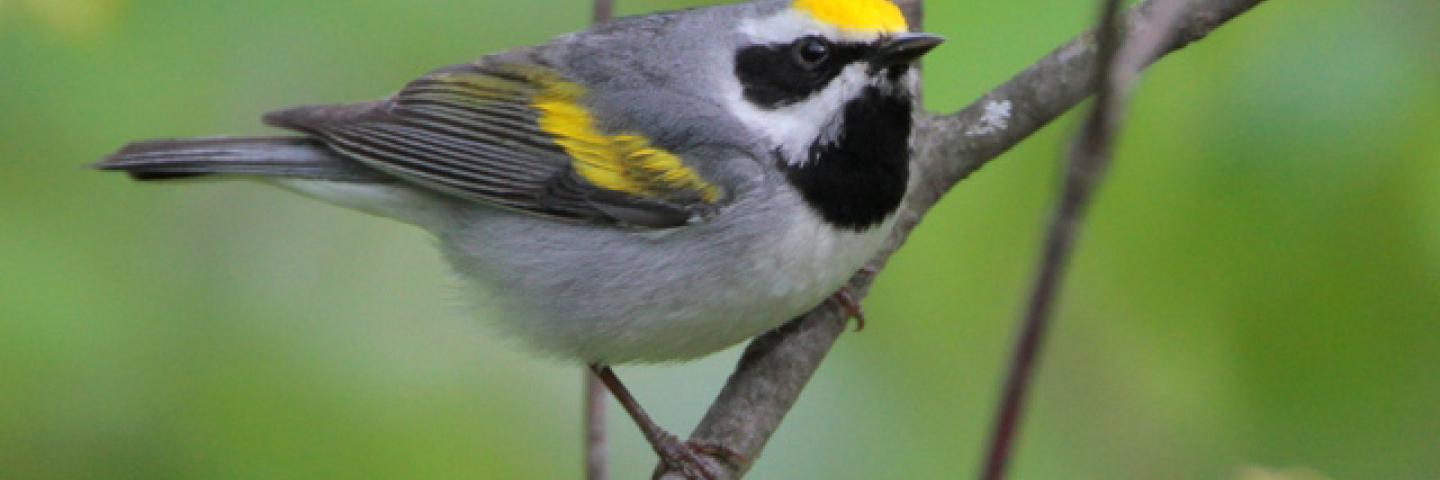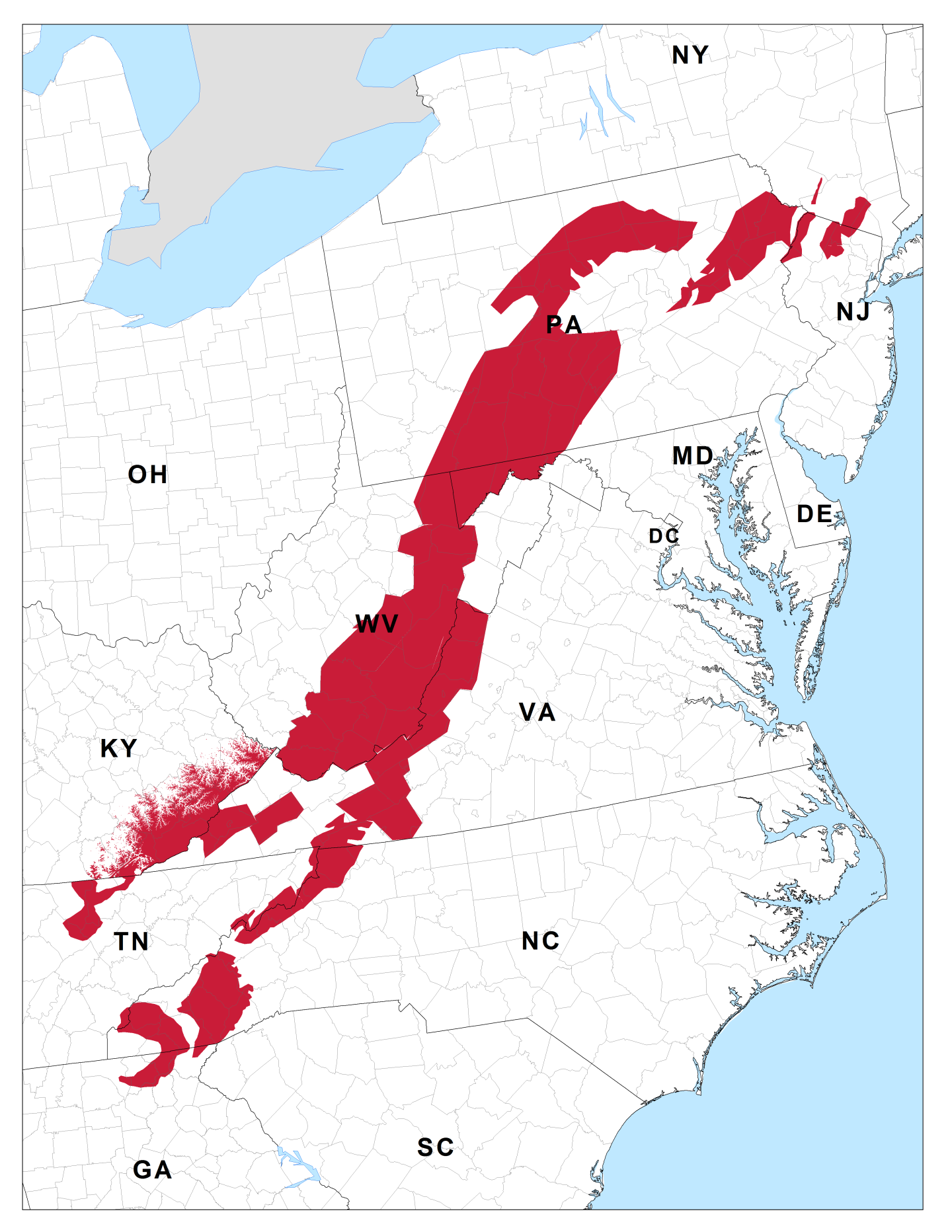
The Golden Winged Warbler is a vibrantly colored migratory songbird that breeds and nests in the United States and winters in Central and South America.
On the breeding grounds, this species requires expansively forested landscapes comprised of young forests and shrubland patches used for nesting that are interspersed among a diversity of other forest age-classes that are used to raise fledglings.
Early successional habitat in the bird’s breeding range, the Upper Midwest and Appalachian Mountains, has declined over the past 50 years as aging forests have come to dominate huge expanses. Both game and non-game species that rely on younger forests are in decline, including the golden-winged warbler, which has suffered a 66 percent population decline since the 1960s. This major shift in the age classes of forests is the result of a lack of fires that occurred historically and unsustainable forestry practices that do not result in healthy, structurally diverse forests.
Most of the golden-winged warbler’s nesting habitat falls on private lands, including Appalachia where 80 percent of forestland is privately owned. Landowners are helping the at-risk bird and many associated wildlife species by voluntarily improving the health and diversity of their forests.

Forest landowners are part of the solution
Forest landowners in Georgia, Kentucky, Maryland, New Jersey, New York, North Carolina, Pennsylvania, Tennessee, Virginia, and West Virginia are helping the golden-winged warbler rebound by voluntarily conserving habitat on their land. Specifically, these landowners have worked with NRCS field offices and partners such as the American Bird Conservancy, Pheasants Forever, and National Turkey Federation to develop and implement conservation plans that target the creation of high quality early successional habitat.
Own or manage land here? You can help.
NRCS offers technical and financial assistance to help agricultural producers voluntarily conserve golden-winged warbler habitat on private lands. This assistance helps producers plan and implement a variety of conservation activities, or practices, that benefit the bird, agricultural operations and forestland.
Technical assistance is free to producers. The agency’s staff of experts and conservation partners work side-by-side with producers to develop a conservation plan. Each plan focuses on the creation of golden-winged warbler nesting habitat and is tailored to the landowner’s property. These plans provide a roadmap for how to use a system of conservation practices to meet natural resource and production goals.
Financial assistance helps producers pay for the adoption of a system of conservation practices that improve the health of forest ecosystems. NRCS assistance covers part of the cost. This assistance helps landowners target the removal of trees and invasive weeds and implement other activities.
Working Lands for Wildlife
The golden-winged warbler is a nationally identified target species of the Working Lands for Wildlife (WLFW) partnership, a collaborative approach to conserve habitat on working lands. From 2012 to 2016, WLFW enabled producers to conserve or create more than 13,000 acres of early successional habitat through the implementation of science-based habitat guidelines developed especially for the golden-winged warbler. By the end of 2021, the agency aims to help landowners manage for an additional 15,000 acres of habitat. WLFW provides technical and financial assistance through the Environmental Quality Incentives Program, which is funded through the Farm Bill, the largest funding source for wildlife habitat conservation on private lands.
Habitat restored for the golden-winged warbler benefits many other species, including songbirds like indigo bunting, gray catbird and prairie warbler as well as game species like American woodcock, cottontail, wild turkey, deer and grouse.

